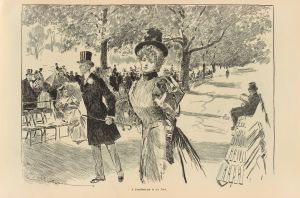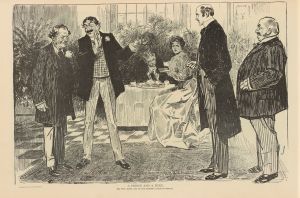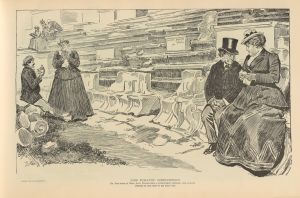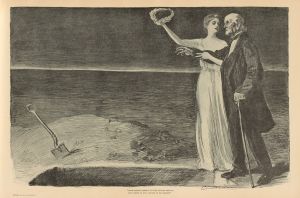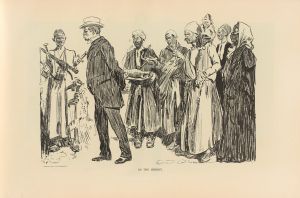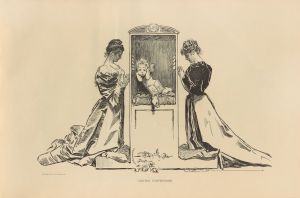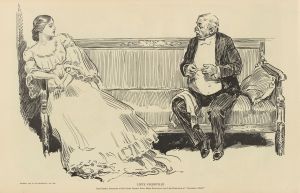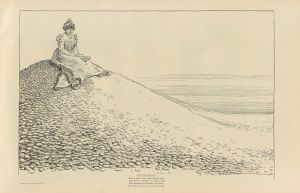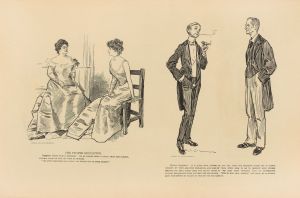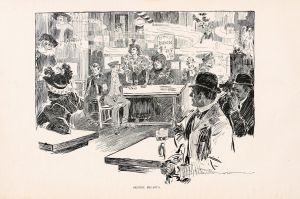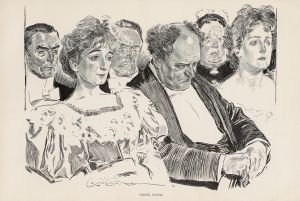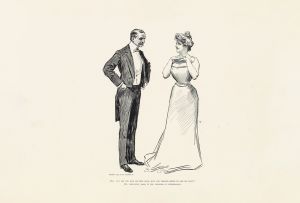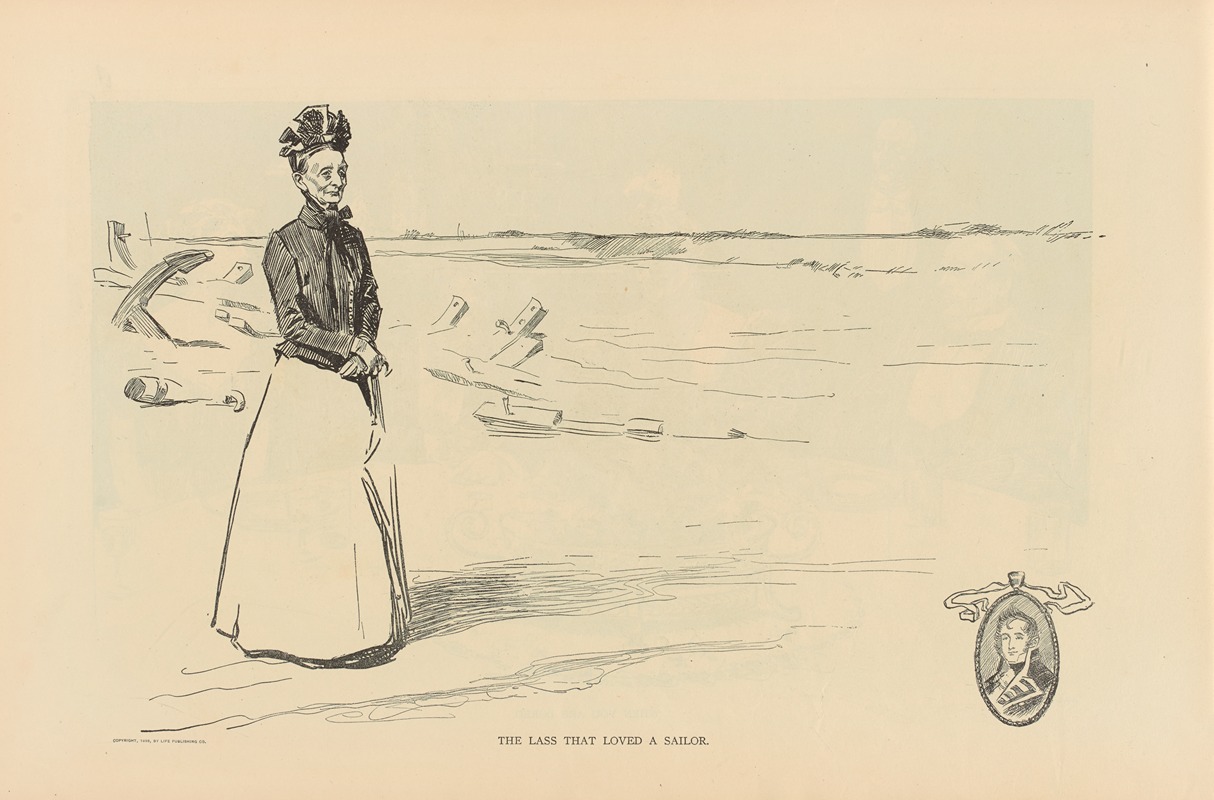
The lass that loved a sailor
A hand-painted replica of Charles Dana Gibson’s masterpiece The lass that loved a sailor, meticulously crafted by professional artists to capture the true essence of the original. Each piece is created with museum-quality canvas and rare mineral pigments, carefully painted by experienced artists with delicate brushstrokes and rich, layered colors to perfectly recreate the texture of the original artwork. Unlike machine-printed reproductions, this hand-painted version brings the painting to life, infused with the artist’s emotions and skill in every stroke. Whether for personal collection or home decoration, it instantly elevates the artistic atmosphere of any space.
Charles Dana Gibson was an influential American illustrator, best known for creating the iconic "Gibson Girl," a representation of the idealized American woman at the turn of the 20th century. His work captured the spirit and social dynamics of his time, often with a touch of humor and satire. One of his notable works is "The Lass That Loved a Sailor," which reflects his characteristic style and thematic interests.
"The Lass That Loved a Sailor" is a pen-and-ink illustration that showcases Gibson's skill in capturing intricate details and expressions. The artwork typically features a young woman, embodying the Gibson Girl archetype, alongside a sailor. This pairing highlights a romantic or affectionate connection, a common theme in Gibson's work that often explored relationships and societal norms.
Gibson's illustrations were widely published in popular magazines of the era, such as Life, Harper's Weekly, and Scribner's, making his work highly accessible to the public. His depictions of women, in particular, played a significant role in shaping public perceptions of femininity and beauty during the late 19th and early 20th centuries. The Gibson Girl was characterized by her poise, independence, and elegance, often seen as a symbol of the modern woman.
"The Lass That Loved a Sailor" fits within this broader context of Gibson's work, where he frequently depicted women in various social settings and roles. The sailor, a figure often associated with adventure and exploration, adds a dynamic element to the illustration, suggesting themes of romance and longing. This combination of characters would have resonated with contemporary audiences, familiar with the cultural narratives of love and separation tied to maritime life.
Gibson's influence extended beyond illustration; his work impacted fashion and popular culture. The Gibson Girl became a fashion trend, inspiring hairstyles and clothing that emulated the elegant and confident women he drew. This cultural phenomenon underscored the power of visual media in shaping societal ideals and trends.
While specific details about the creation and publication of "The Lass That Loved a Sailor" are limited, it remains a testament to Gibson's artistic legacy. His ability to capture the nuances of human expression and societal themes continues to be appreciated by art historians and enthusiasts.
Overall, Charles Dana Gibson's work, including "The Lass That Loved a Sailor," offers valuable insights into the social and cultural fabric of his time. His illustrations not only entertained but also provoked thought and discussion about the roles and expectations of men and women in society. Through his art, Gibson left an indelible mark on American visual culture, influencing generations of artists and illustrators.





